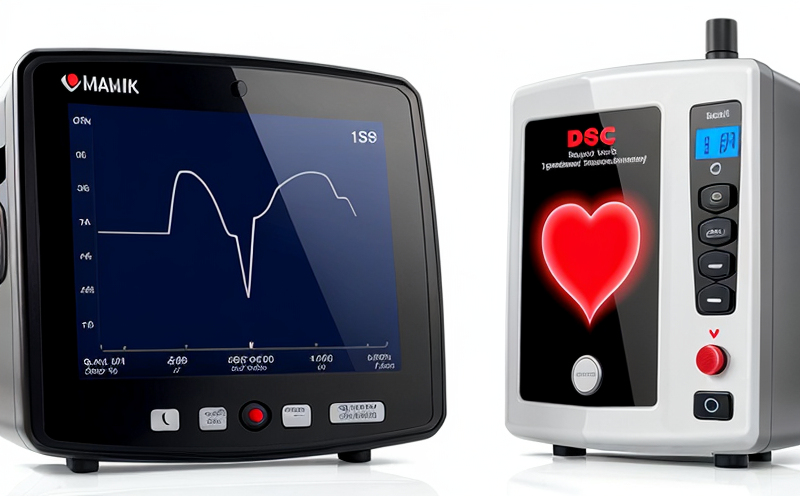ISO 25539-3 Vena Cava Filter Fracture Resistance Testing
The ISO 25539-3 standard is specifically designed to evaluate the fracture resistance of vena cava filters, which are medical devices used to prevent thromboembolic events. These filters are implanted in the inferior vena cava (IVC), a large vein that carries deoxygenated blood from the lower extremities and abdominal region back to the heart.
The testing procedure outlined in ISO 25539-3 is critical for ensuring patient safety by assessing the device's ability to withstand mechanical stresses without fracturing. Fracture can lead to embolization, a potentially life-threatening condition where fragments of the filter break off and travel through the bloodstream.
The test involves subjecting the vena cava filter to controlled loading conditions that simulate real-world use scenarios. The specimen preparation is meticulous; each device must be inspected for any visible defects or damage before testing begins. The test setup includes specialized equipment designed to apply defined mechanical loads to the filter, while simultaneously monitoring displacement and force.
The standard specifies a series of tests, including uniaxial tensile testing, which evaluates the filter's response under tension, and cyclic loading tests that simulate the dynamic forces exerted by blood flow. The results are analyzed for compliance with predefined acceptance criteria, ensuring that the device remains intact under specified conditions.
Understanding the fracture resistance of vena cava filters is essential in medical device design and regulation. This test helps manufacturers ensure their products meet stringent safety standards, thereby protecting patients from potential complications. Regulatory bodies such as the US Food and Drug Administration (FDA) and the European Medicines Agency (EMA) require adherence to ISO 25539-3 for vena cava filter approval.
The testing process not only assesses the mechanical integrity of the device but also provides valuable insights into potential design improvements. By identifying weak points or areas prone to failure, manufacturers can refine their designs and enhance patient safety. This is particularly crucial given the long-term nature of these devices, which remain in the body for extended periods.
The ISO 25539-3 standard is part of a broader suite of medical device testing standards aimed at ensuring product safety and efficacy. It complements other tests such as biocompatibility assessments, durability evaluations, and clinical performance studies, forming an integral part of the regulatory approval process for vena cava filters.
In conclusion, ISO 25539-3 Vena Cava Filter Fracture Resistance Testing is a vital procedure in medical device development. It ensures that devices meet stringent safety standards, providing peace of mind to healthcare providers and patients alike. This testing not only enhances patient safety but also contributes to the continuous improvement of medical technology.
Applied Standards
| Standard | Description |
|---|---|
| ISO 25539-3:2018 | Fracture resistance of vena cava filters - Part 3: Fracture testing methodology and acceptance criteria. |
Why Choose This Test
The ISO 25539-3 test is essential for ensuring the safety and efficacy of vena cava filters. By evaluating the device's fracture resistance, it helps prevent potential complications such as embolization. This testing process provides critical data that can inform design improvements and regulatory compliance.
For manufacturers, this test offers a robust framework to assess their devices' mechanical integrity. It allows them to identify any weaknesses or areas of concern that may require further investigation or redesign. The test results are also crucial for obtaining regulatory approval, ensuring that the device meets all safety and performance requirements.
From a patient perspective, adherence to ISO 25539-3 provides assurance that the vena cava filter has been rigorously tested and proven safe. This can alleviate concerns about potential risks associated with implantation and long-term use of the device.
The test also supports continuous improvement in medical technology. By regularly subjecting devices to this testing, manufacturers can stay ahead of potential issues and incorporate new materials or design features that enhance safety and performance.
Quality and Reliability Assurance
- Precision instrument calibration: Ensures accurate measurement of mechanical loads applied during the test.
- Data logging and analysis: Comprehensive tracking of specimen behavior under load, including force, displacement, and fracture patterns.
- Environmental controls: Maintaining consistent environmental conditions to ensure reliable test results.
- Reproducibility checks: Regular verification that tests can be repeated with consistent outcomes for quality assurance purposes.





